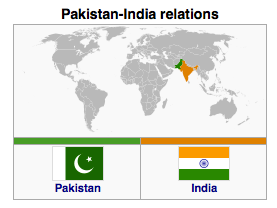China’s Defence Chief Visit To India: A Call Overdue – Analysis
By IPCS
By Dipankar Banerjee
Friendly visits by defence ministers of neighboring countries are always welcome. Especially welcome is the visit of General Liang Guanglie, the defence chief of India’s northern neighbour, which comes after an eight years interregnum. He is the most important of the current crop of generals in China; was head of its General Staff earlier, its present Defence Minister for four years and a member of the Central Military Commission (its supreme body for the last 10 years). Important to note is that the General is scheduled to retire in the near future, around the same time as the decadal leadership changes are ushered in the CCP and this might well be his final official visit abroad. Yet, the visit is significant as it paves the way for the Indian defence minister to pay a return call and further deepen mutual relations in the future.

The raison d’être of the visit was clear from the beginning. Now, its importance should essentially be measured in bilateral, regional and the larger global context. Unfortunately, the analysis in the Indian media has miserably failed on this account as it did not even attempt to capture the nuances of the visit. The visit marked the consolidation of several important initiatives and bodes several strategic implications for India’s future .
Amongst these, the agreement to resume the bilateral Army-to-Army Exercises must be genuinely welcomed. Two rounds had taken place earlier in Sichuan (China) in 2007 and at Belgaum (India) in 2008. Named Hand-in-Hand, these were platoon-plus level counter terrorism exercises, where often the “brass” visiting as spectators outnumbered the participants. The exercises were discontinued ostensibly to further “review” the process. Relations took a downward turn over some rather inexplicable reasons like over denial of visas and restricting contacts. Nothing of course ever happens in China without reason and this probably had more to do with pressures from Pakistan or its own attempts to strengthen bilateral ties with Islamabad and therefore, go slow with India.
These developments should also be seen in the context of the report on 26 August 2010 by the influential journalist Selig Harrison in the International Herald Tribune, that there were between 7,000 to 11,000 PLA ‘soldiers’ in Gilgit-Baltistan. The floods in Pakistan had of course devastated the region and assistance was required, which apparently was being provided by China. Even though Selig later lamented using the word ‘soldiers’, the statement already had made an impact, particularly in India. In reality, he might have been referring to the unarmed engineering construction corps of the PLA. Current Indian assessment appears to be that about 4,000 such Chinese personnel remain in this new province of Pakistan even today. Its strategic ramifications for India need not be further emphasized. General Guanglie was questioned on this and he firmly denied that there ever were any PLA soldiers deployed outside China, and the matter rests there as of now. However, any opportunities for soldiers to meet in peaceful maneuvers should always be welcomed. These usually have a beneficial effect in mutual relations.
Another aspect of the visit is that following Wen Jiabao’s (the Prime Minister of the PRC) visit to Nepal earlier this year, Guanglie’s visit to Sri Lanka and India covered the principal countries and areas of interest in South Asia. China’s influence in Nepal has risen dramatically in the last decade. Its connectivity and trade will grow even more in the coming years. In the last five years China has emerged as the largest investor and trading partner of Sri Lanka. The focus is in the south around the Hambantota Development Zone, which is the constituency of President Rajapaksha. This region will be transformed in another three years to resemble at least a poor cousin of Singapore, but enough to ensure that the Rajapaksha clan rules from there for the next quarter century. Meanwhile, China’s defence ties with Sri Lanka also continue to grow.
With China’s infrastructure expanding rapidly beyond its borders, the time is not long when Gilgit-Baltistan, Nepal and even perhaps Bhutan might be linked with better connection than these countries have with India. The strategic ramifications of these increased linkages may reverberate around the South Block. But, unfortunately India lacks the ability to counter such moves and not much purpose will be served by crying wolf.
At the same time, China also has concerns. Guanglie’s visit to India and Sri Lanka has to be seen in the context of the US pivot (rather rebalancing) towards Asia. As jamborees of heads of state begin in East Asia with the approaching end of the year, with the APEC at Vladivostok and other ASEAN meetings, China has decided on pre-emptive this time. The aim is to reassure the region of China’s intentions and to win friends and allies. It has deployed two of its leading Generals, Ma Xiaotian and Cai Yingting to visit key Southeast Asian countries and the US to reassure them on the South China Sea issues and other concerns.
India may not have many cards to counter this game, but its “Look East policy” and friendly relations with East Asia and the US remain an asset. The challenge before Indian foreign and security policy is to diplomatically balance China even as it attempts to bridge the huge “capacity gap.”
Dipankar Banerjee
Mentor, IPCS
email: [email protected]
